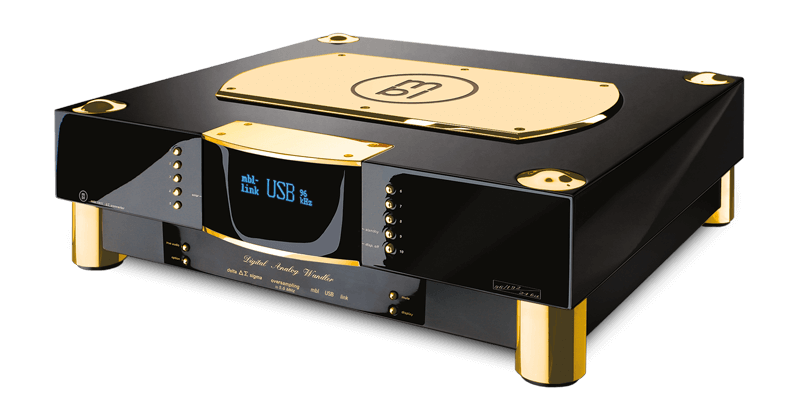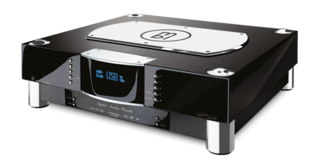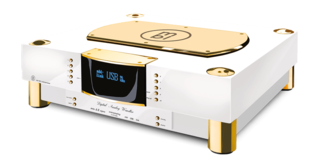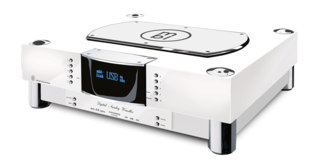Couldn't load pickup availability
A perfect lifelike sound can only be created when the whole range of digital format musical data is transmitted in its entirety and converted into analogue signals with the greatest of care. The mbl 1611 F and its advanced converter concept bonds supreme control of bass and loud signals from the multibit modules with the harmonic registers and natural dimensions of the Delta-Sigma converter domain. This technology’s high precision circuitry also enables ideally controllable functionality and very short signal paths. The mbl 1611 F and its new interface USB MCMI enables you to play even high resolution music formats stored on your hard drive of your computer. All this makes the mbl 1611 F not just a converter but the flexible and future-proof hub of a precise and highly musical stereo system.
In today’s digital world, consumers have endless options when it comes to enjoying music. They can use streaming services from Spotify, Amazon, Tidal, Qobuz, Deezer or Apple, to name but a few. They can also listen to their favorite playlists from mobile phones, tablets, USB sticks and, of course, conventional portable media in CD/PCM formats. Yet no matter the format, all devices share the same need – to convert digital music data into the analog world, something a tiny microchip can adequately manage.
Or you can move beyond adequate to brilliant with a 23-kilogram (50 lbs.) D/A converter firmly planted on solid brass pillars milled right in our own factory; a stand-alone device whose creators have left nothing to chance: the MBL 1611 F. Under the massive, gold-plated cover plate, two top-end converter designs – 1-Bit/Delta-Sigma and Multibit – take care of the accurate assignment of analog voltage values to the digital music signals. The combined technological strengths of each converter create a fantastic sense of aural space and the meticulous reproduction of the finest overtones, without compromising tight control of the deepest octaves. Together they deliver the delicate fragility of the most emotional musical passages, or thundering chest-pump bass notes when the data demands it. Using “single-stage” output electronics, the music signal leaves the digital/analog converter in the most direct way, either via balanced (XLR) or single-ended (RCA) outputs, ensuring as little interference as possible with few contact surfaces and short signal paths. The reward for this circuit layout: an incredible 117 dB signal-to-noise ratio.
The 1611 F displays similar flexibility on the incoming side. An impressive array of XLR, RCA, Toslink (optical) and USB inputs await digital signals with up to 24-bit resolution and a 96 kHz sampling rate. In order to reduce unwanted jitter often associated with inferior USB players such as computers, mobile phones or tablets, a superb master clock takes charge of the timing and provides stable square-wave signals for precise processing of the bitstream to come. Ideally, when playing CDs, the converter receives its signals already perfectly prepared into bite-sized chunks by its dream partner, the MBL 1621 A CD transport, and astonishes the listener with a playback quality that is unrivalled.
The simple calculation, 16 x 6 = 96, represents the dynamic range of a CD, meaning the ratio between the quietest sound a disc can store and the loudest noise it is capable of producing as defined in decibels. The audio tracks of the CD are encoded with 16 bits. Each bit delivers a dynamic range of 6 decibels, making a total of 96 decibels of dynamic range.
One might think that would be enough to flawlessly capture a piece of music on a digital file or CD recording with the lowest levels of the music sufficiently far away from noise, and with enough safety distance from distortion-prone overloads. This is the assumption of the major manufacturers of digital-analogue converter chips, such as AKM, ESS or Texas Instruments (Burr-Brown).
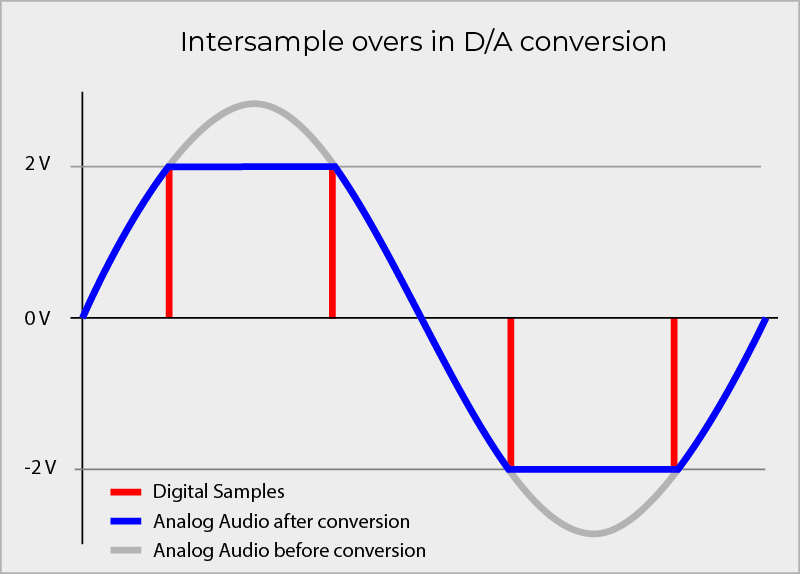 Unfortunately, audio reality paints a completely different picture, especially with pop music where overdriven recordings are the order of the day. Every music producer wants his songs to be loud and dynamic when they reach the audience’s ears. What could be achieved by any listener with a simple turn of the volume knob is built in right from the start by many recording studios where producers encode the music signal hard and fast to the maximum level. This is to the detriment of the highest-quality music playback. If several samples on a CD are fully distorted one after the other, the digital filters of the converters generate waveforms that are overdriven by up to three decibels – and are then abruptly cut or “clipped.” Unpleasant distortions are the audible and measurable outcome of this practice.
Unfortunately, audio reality paints a completely different picture, especially with pop music where overdriven recordings are the order of the day. Every music producer wants his songs to be loud and dynamic when they reach the audience’s ears. What could be achieved by any listener with a simple turn of the volume knob is built in right from the start by many recording studios where producers encode the music signal hard and fast to the maximum level. This is to the detriment of the highest-quality music playback. If several samples on a CD are fully distorted one after the other, the digital filters of the converters generate waveforms that are overdriven by up to three decibels – and are then abruptly cut or “clipped.” Unpleasant distortions are the audible and measurable outcome of this practice.
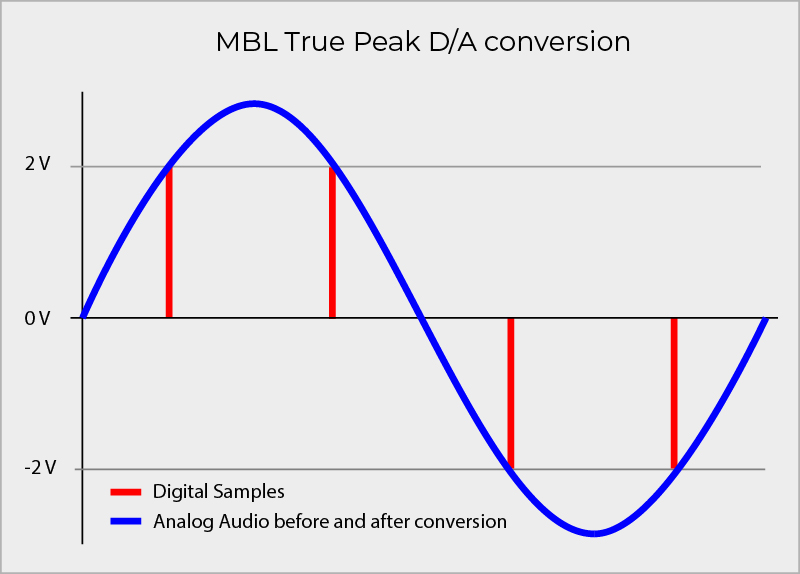
Fortunately, this is not the case with MBL's converter design. With sophisticated stop-gaps built into the digital filters, MBL’s engineers have ingeniously created an additional modulation reserve of three decibels, thereby correcting and basically eliminating any sound-degrading overloads from CD or music files. We call it True Peak Technology. Listeners call it extraordinary. The result is natural, distortion-free sound from CDs and digital music files – even at peak volume levels.
Extraordinary, indeed!
| D/A Converter Technology | Multi level Delta Sigma |
| Sample Rates | 96, 48, 44.1, 32 kHz |
| Resolution | 24 bit linear |
| Signal-to-noise ratio | 117 dB |
| Digital inputs | 1 x XLR (AES/EBU) + 1 x optional 1 x RCA (S/P DIF) + 1 x optional 1 x BNC (S/P DIF) optional 1 x Glas ST optional 1 x Toslink + 1 x optional 1 x USB Link |
| Digital outputs | 1 x RCA (S/P DIF) |
| Analog outputs | 2 x RCA 1 x XLR |
| Weight | 23 kg / 50.5 Ibs |
